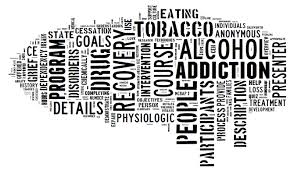Rehab Articles

The latest research shows that the number of people in the nursing profession who struggle with substance abuse could be as high as 10%-20%, while at the same time there is a shortage of qualified nurses and nursing students to fill the openings in this sector of the medical profession. According to the experts the key to addressing substance abuse in the nursing profession is to provide treatment and support to these individuals rather than applying punishment. This approach will help protect public safety while providing much needed treatment and services so that the individual can overcome their addiction.
The new research on substance abuse in the nursing profession was published in the Journal of Clinical Nursing. Vanderbilt University School of Nursing researcher and lead paper author Todd Monroe, Ph.D., explained “Addiction among nurses has been recognized by professionals in the field for over a hundred years. While research consistently reports incidence rates of 10 to 15 per cent, some studies suggest that this could be as high as 20 per cent.” Monroe continued by saying “The fact that they work in a highly stressful environment with easy access to powerful drugs can expose them to an increased risk of substance misuse and abuse. They are expected to show compassion when caring for patients who are alcohol and/or drug dependent and they should extend the same compassion to colleagues struggling with chemical dependency, which is an illness. ATD programs appear to be the best way to protect patients and retain nurses at a time when the profession is facing serious shortages of experienced professionals.”
Rehab Articles

New research has many experts calling for mental health and substance abuse benefit integration for children and adolescents. These problems are delivered most effectively through the primary medical care setting, and that is especially true with younger age groups like children and adolescents. Researchers from the University of California, Los Angeles have confirmed that this is the most beneficial relationship. According to the researchers integrating mental health and substance abuse benefits into the primary care model improved outcomes by as much as 66% for children and adolescents. UCLA professor of psychiatry and biobehavioral sciences, lead study author, and UCLA Youth Stress and Mood Program director Joan Asarnow, Ph.D. explains “The take-home message is that integrated care works. Kids and teens do better than they otherwise would. That’s promising because we have a huge mental health problem in this country.”
Dr. Lonnie Zeltzer, UCLA distinguished professor of pediatrics, anesthesiology, psychiatry, and biobehavioral sciences and a study co-author, discussed the integration of mental health and substance abuse into primary care models for children and adolescents. “The old model has been that if your child has a medical problem, he or she goes to the pediatrician. But mental health was often not addressed, or if it was, patients were referred to a mental health specialist, and the child’s health insurance determined whether or not the child had access to the mental health specialist as well as the quality of that care. Children of poorer families lost out.” Asarnow also stated “Integrated approaches bring mental health care to a setting where kids already are, reducing barriers to mental health care such as stigma or the practical complications of shifting to a different care setting.”
Rehab Articles

A new study on recidivism, published in the Health and Justice journal from Springer, shows that mental illness and substance abuse both raise the rate of recidivism among ex-prisoners. The study showed that ex-convicts who had a history which involved mental illness, substance abuse, or extreme poverty also had a much higher risk of ending back in prison. The study also showed that people who are chronically ill, who have attempted suicide, or who are obese are less likely to end up back in prison once they are released. University of Melbourne in Australia researcher Emma Thomas, M.Sc., led the study, which included analyzing interviews with more than 1,300 prisoners. These prisoners were interviewed both before and after their initial release, and they all came from 7 Queensland, Australia prisons.
Mental illness, substance abuse, and poverty factors were discussed in the interviews. The study found that those who had reported using cannabis, opioids, or methamphetamine before being sent to prison, and those who were convicted of a drug related crime, had a much higher risk of returning to prison once they are released. Substance abuse and mental illness are often present in the same individual. Participants who lived below the poverty level, and those who did not place an importance on staying healthy, were also more likely to head back to prison once they were released. According to Thomas “Many of the factors identified are easily measurable prior to release from prison, and could inform improvements to transitional planning without the need for additional, in-depth assessment. Most of these predictors are also modifiable and could potentially serve as targets for re-entry interventions.”
Rehab Articles

There are many alcohol abuse facts that you may not know. For instance did you know that every individual is different when it comes to how much alcohol they can consume before they start to feel the effects? Individuals who have built up a tolerance for alcohol because of their substance abuse may be able to drink large amounts of alcohol without seeming to be impaired. This is regardless of size or weight. Another interesting fact is that there is a large percentage of people who know they have a problem with alcohol abuse yet they never seek treatment for this problem. Sometimes this is because they are ashamed, at other times the individual does not really want to stop drinking.
Treatment for alcohol abuse, unlike some types of substance abuse, may require medical detox. Over time as you drink your body actually develops a physical tolerance to this substance. If you drink a lot for a long time and then you just quit cold turkey you could end up with life threatening withdrawal symptoms. These can include seizures, DTs, and other problems. A treatment program that provides medical detox will have medical staff on site so that any dangerous withdrawal symptoms can be treated with the appropriate medications. If you have a problem with alcohol abuse you need help. If you have been through treatment before and you need further rounds this may indicate that the previous program was not effective. Many people only succeed when they find the right program and the best possible treatment methods.
Rehab Articles

There are a number of important factors that have to be examined with any dual diagnosis. This type of diagnosis is used if you have some form of mental illness along with some type of substance abuse. This can be someone who is bipolar and who abuses alcohol to try and manage their mental illness. It is very common to find substance abuse and mental illness in the same patient, and these two conditions often go together. The first factor that needs to be looked at is what the specific symptoms are. This will help diagnose the mental illness component so that both issues can be effectively treated. If only half of the problem is resolved you will eventually end up right back where you started and suffer a relapse.
Once the proper dual diagnosis has been made, one that identifies both the substance abuse and the mental illness, then the next factor is the right treatment program for your specific treatment needs. There are great programs that specialize in dual diagnosis treatment, but there are also some which do not have the knowledge and resources available to treat these types of cases. Do you have health insurance? If so will it cover the program that you have chosen? If not can you afford to pay the cost? These are important questions to ask. Some of the most effective treatment programs can run tens of thousands of dollars a month. On the other hand just because a program costs this much that does not make it the most effective.



